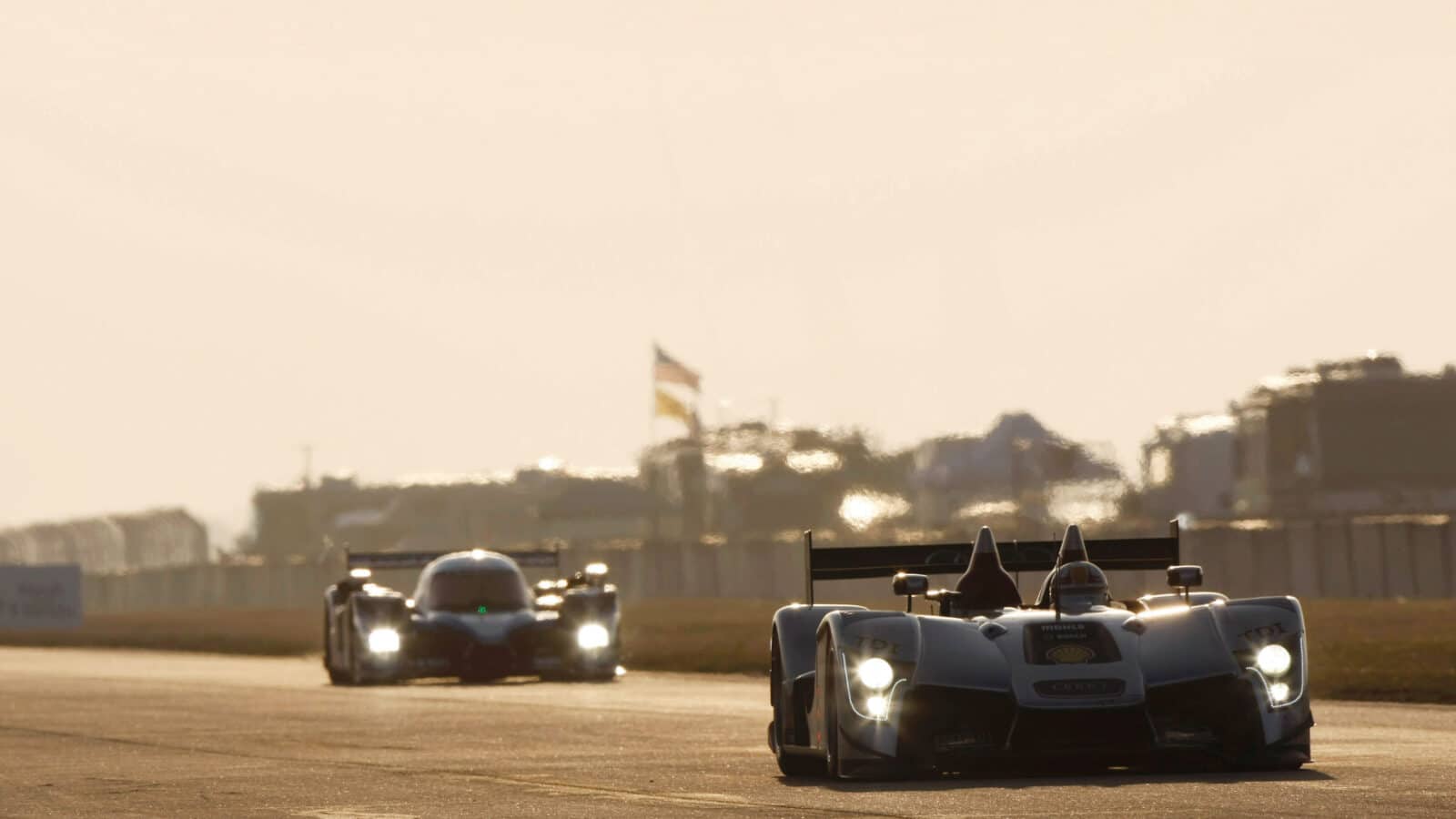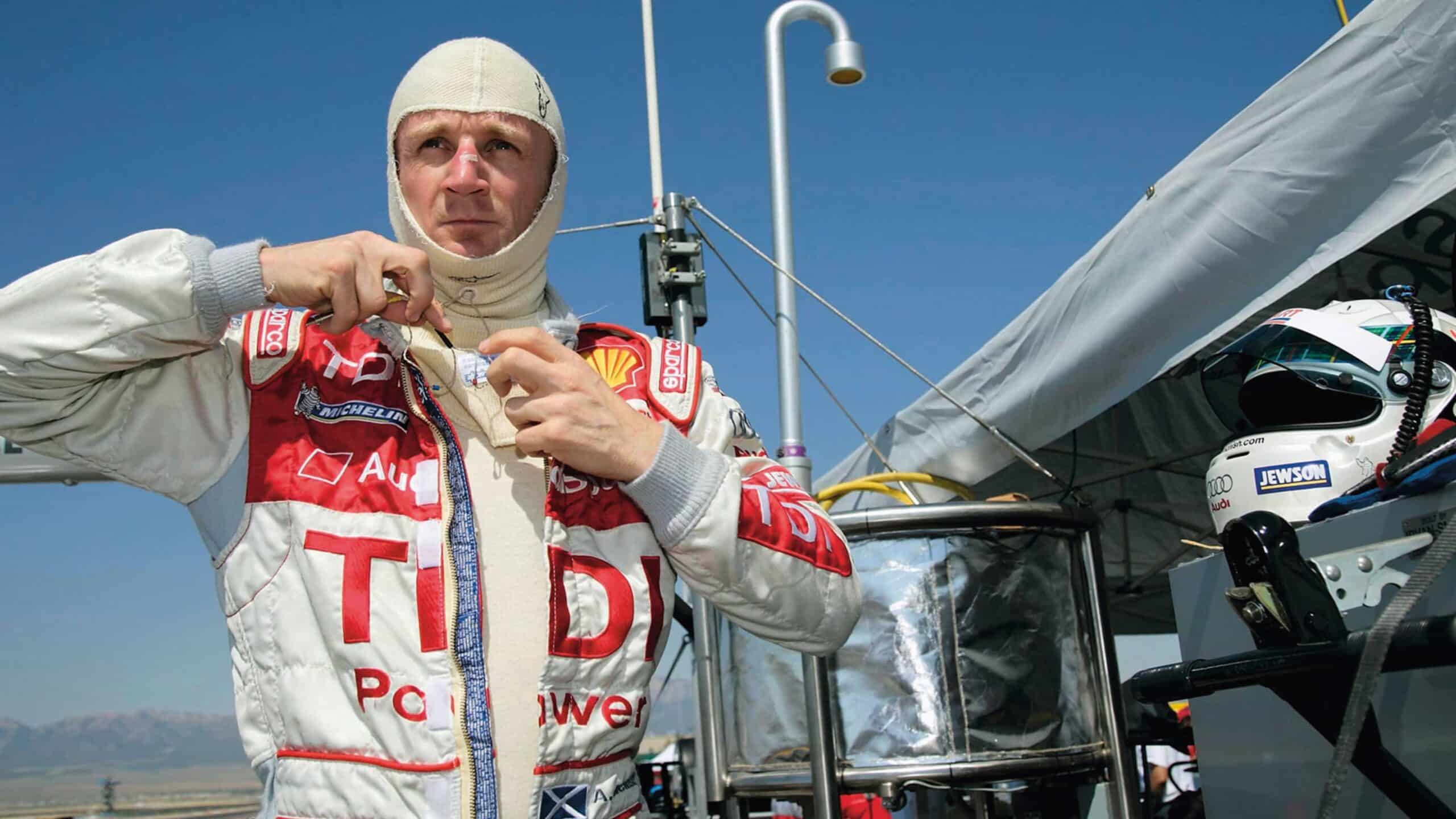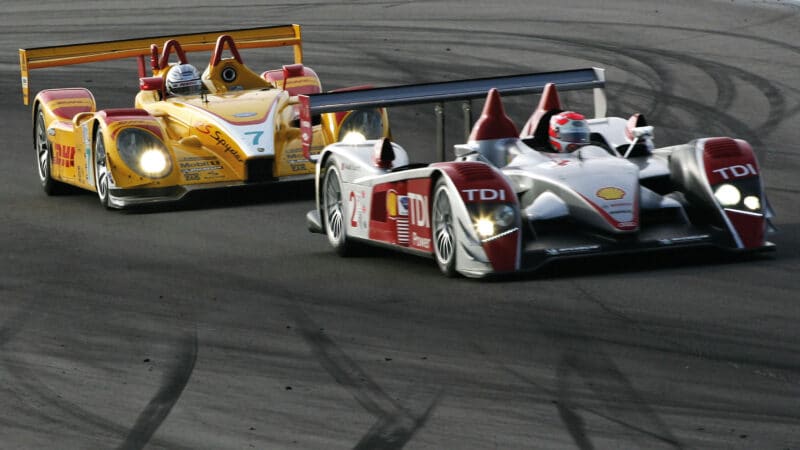Why Audi’s Le Mans domination was hard-earnt
In the Noughties, Allan McNish was one oif Audi’s golden boys, but victories didn’t come easy — from either his team-mats or rivals

McNish ended 2007 as joint champion in ALMS with Audi team-mate Capello – a repeat of the previous season
One question on Audi back in the 2000s, and which was also relevant to Toyota more recently in sports car racing, was: who were you beating? The first people we had to beat were our team-mates. There was always an internal rivalry. Emanuele Pirro and I, for example, always had a pretty strong rivalry, Frank Biela less so because he was fully laid-back. There were a few times when we got into wheel banging because only one of us was going to end up winning, whether it was Le Mans, Sebring or a championship.
But even in 2005 when we were up against Pescarolo they had a huge performance advantage back then and there were a few times when we were definitely on the back foot. Then Peugeot came along – a manufacturer rival using the same technology with their own diesel powertrain. That was a straight fight with two very different mentalities. There was the approach of all-out speed, go for it, intra-team rivalry and everything else, which was Peugeot. Then there was a slightly more Le Mans-focused, intra-team all working together, one car supporting the other (even if we didn’t want to), which was Audi. Very different mentalities on each side of the fence.

Also don’t forget in North America there were the LMP2s with BoP regulations to make them equivalent in performance. So we had Acura and Porsche to race against. You came from racing against Peugeot, which was like two heavyweights punching the hell out of each other, which was really cool. I enjoyed the aggressiveness, butting heads against each other before getting in the car, then you knew you had to deliver. But on the other side we got to America and faced some oddities. I remember we went to Salt Lake City. With our huge torque and speed in LMP1 and a more than kilometre-long straight we expected to be on pole. We were eighth on the grid. Everything was LMP2 in front of us because there were loads of corners, so that racing dynamic was different. You had to be agile and think all the way to the end. That was super-competitive and I really enjoyed that era.
When it came to Le Mans the fights with Peugeot were slugging matches. Bruno Famin, now the principal at Alpine in F1, was the technical director at Peugeot. If we were successful Bruno would say, “Well done” – not everyone in their organisation would do that! We tried to stay within the borderline, even if on occasion we stepped over it.
Sebring in 2009 is one of my favourite memories. It was the hardest-fought race I did: 12 hours of being absolutely on it and there was no other way to win. There was no hiding place, against a manufacturer with equivalent technology and equipment. Then there’s Petit Le Mans in 2008 when I shunted on the way to the grid and came back. That is one of my favourites from a results point of view.

BoP regulations evened up the grid in the American Le Mans Series in 2007
Getty Images
Le Mans 2008? The second of my three Le Mans wins is considered one of the greatest editions of Le Mans, when we faced a faster Peugeot. The year before we had been leading comfortably when a wheel came off on Sunday morning. After that I thought, “I’m never going win another one because how the hell can I do more?” I’d led every Le Mans I’d raced in between my win in 1998 and it always slipped away. That year we were dominant, two laps in the lead and then it was gone. In 2008 we weren’t as competitive in comparison to Peugeot, in fact we were slow and we knew it. At Spa we had developed some aero for the rear wing which in the wind tunnel gave nothing, but we stuck it on. It allowed me as a driver to take more out of the car. I don’t know why, it just gave me that little extra feel and we could pressure Peugeot more. That exposed a bit of a weakness.
That was the little bit of hope I had. But as soon as we saw the qualifying times that disappeared! Then it was a case of slugging it out and seeing where we got to, not necessarily with the belief we’d win.
I’ve got one of those cars, although not the 2008 Le Mans winner. It’s the R10 that I raced in 2006 and ’07, in which I won the American Le Mans Series with Dindo. I bought it a few years ago and it’s sitting in one of Dindo’s Audi dealerships. It’s my favourite car. Difficult to drive. You had to pick it up and menace it. But it fitted my style of driving and the era better than anything else.

